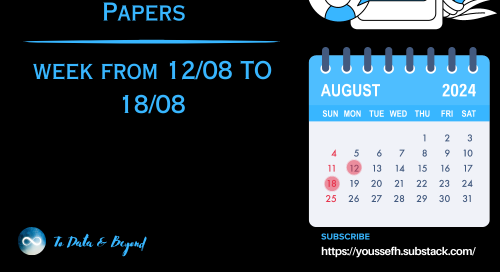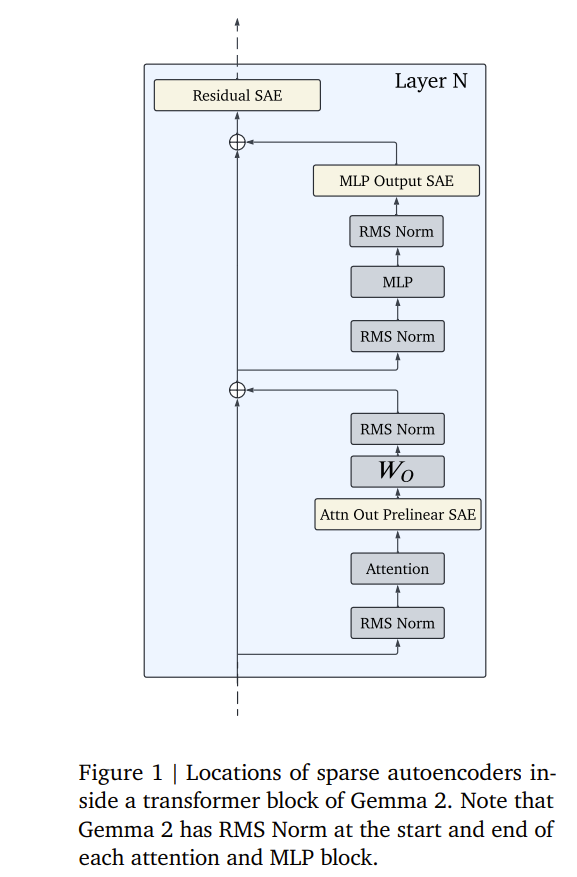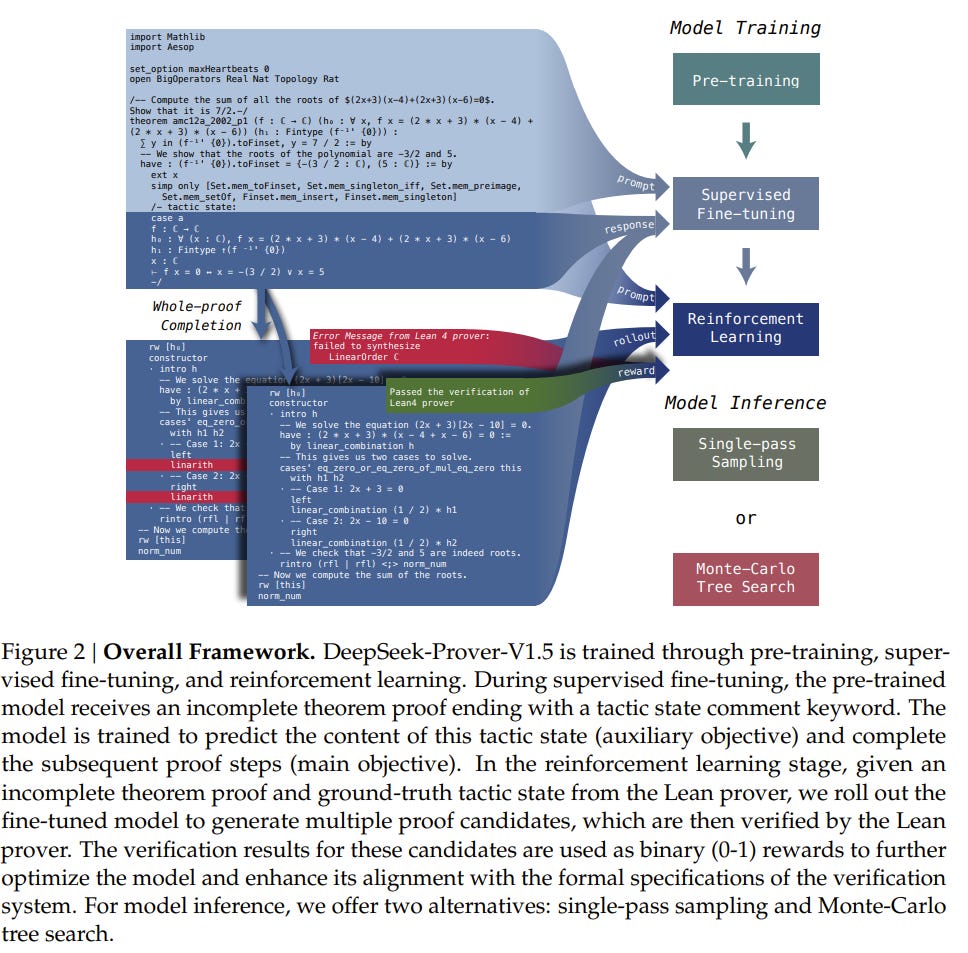Important LLMs Papers for the Week from 12/08 to 18/08
Stay Updated with Recent Large Language Models Research
Large language models (LLMs) have advanced rapidly in recent years. As new generations of models are developed, researchers and engineers need to stay informed on the latest progress.
This article summarizes some of the most important LLM papers published during the Third Week of August 2024. The papers cover various topics shaping the next generation of language models, from model optimization and scaling to reasoning, benchmarking, and enhancing performance.
Keeping up with novel LLM research across these domains will help guide continued progress toward models that are more capable, robust, and aligned with human values.
Table of Contents:
LLM Progress & Benchmarking
Retrieval Augment Generation (RAG)
LLM Quantization & Optimization
LLM Reasoning
LLM Safety & Alignment
My New E-Book: LLM Roadmap from Beginner to Advanced Level
I am pleased to announce that I have published my new ebook LLM Roadmap from Beginner to Advanced Level. This ebook will provide all the resources you need to start your journey towards mastering LLMs.
1. LLM Progress & Benchmarking
1.1. VITA: Towards Open-Source Interactive Omni Multimodal LLM
The remarkable multimodal capabilities and interactive experience of GPT-4o underscore their necessity in practical applications, yet open-source models rarely excel in both areas.
In this paper, we introduce VITA, the first-ever open-source Multimodal Large Language Model (MLLM) adept at simultaneous processing and analysis of Video, Image, Text, and Audio modalities, and meanwhile has an advanced multimodal interactive experience.
Starting from Mixtral 8x7B as a language foundation, we expand its Chinese vocabulary followed by bilingual instruction tuning. We further endow the language model with visual and audio capabilities through two-stage multi-task learning of multimodal alignment and instruction tuning.
VITA demonstrates robust foundational capabilities of multilingual, vision, and audio understanding, as evidenced by its strong performance across a range of both unimodal and multimodal benchmarks.
Beyond foundational capabilities, we have made considerable progress in enhancing the natural multimodal human-computer interaction experience. To the best of our knowledge, we are the first to exploit non-awakening interaction and audio interrupt in MLLM.
VITA is the first step for the open-source community to explore the seamless integration of multimodal understanding and interaction. While there is still lots of work to be done on VITA to get close to closed-source counterparts, we hope that its role as a pioneer can serve as a cornerstone for subsequent research.
1.2. Gemma Scope: Open Sparse Autoencoders Everywhere All At Once on Gemma 2
Sparse autoencoders (SAEs) are an unsupervised method for learning a sparse decomposition of a neural network’s latent representations into seemingly interpretable features.
Despite recent excitement about their potential, research applications outside of the industry are limited by the high cost of training a comprehensive suite of SAEs.
In this work, we introduce Gemma Scope, an open suite of JumpReLU SAEs trained on all layers and sub-layers of Gemma 2 2B and 9B, and select layers of Gemma 2 27B base models. We primarily train SAEs on the Gemma 2 pre-trained models, but additionally, release SAEs trained on instruction-tuned Gemma 2 9B for comparison.
We evaluate the quality of each SAE on standard metrics and release these results. We hope that by releasing these SAE weights, we can help make more ambitious safety and interpretability research easier for the community.
1.3. Med42-v2: A Suite of Clinical LLMs
Med42-v2 introduces a suite of clinical large language models (LLMs) designed to address the limitations of generic models in healthcare settings. These models are built on Llama3 architecture and fine-tuned using specialized clinical data.
They underwent multi-stage preference alignment to effectively respond to natural prompts. While generic models are often preference-aligned to avoid answering clinical queries as a precaution, Med42-v2 is specifically trained to overcome this limitation, enabling its use in clinical settings.
Med42-v2 models demonstrate superior performance compared to the original Llama3 models in both 8B and 70B parameter configurations and GPT-4 across various medical benchmarks. These LLMs are developed to understand clinical queries, perform reasoning tasks, and provide valuable assistance in clinical environments.
1.4. The AI Scientist: Towards Fully Automated Open-Ended Scientific Discovery
One of the grand challenges of artificial general intelligence is developing agents capable of conducting scientific research and discovering new knowledge. While frontier models have already been used as aids to human scientists, e.g. for brainstorming ideas, writing code, or prediction tasks, they still conduct only a small part of the scientific process.
This paper presents the first comprehensive framework for fully automatic scientific discovery, enabling frontier large language models to perform research independently and communicate their findings. We introduce The AI Scientist, which generates novel research ideas, writes code, executes experiments, visualizes results, describes its findings by writing a full scientific paper, and then runs a simulated review process for evaluation.
In principle, this process can be repeated to iteratively develop ideas in an open-ended fashion, acting like the human scientific community. We demonstrate its versatility by applying it to three distinct subfields of machine learning: diffusion modeling, transformer-based language modeling, and learning dynamics. Each idea is implemented and developed into a full paper at a cost of less than $15 per paper.
To evaluate the generated papers, we design and validate an automated reviewer, which we show achieves near-human performance in evaluating paper scores. The AI Scientist can produce papers that exceed the acceptance threshold at a top machine learning conference as judged by our automated reviewer.
This approach signifies the beginning of a new era in scientific discovery in machine learning: bringing the transformative benefits of AI agents to the entire research process of AI itself, and taking us closer to a world where endless affordable creativity and innovation can be unleashed on the world’s most challenging problems.
1.5. Diversity Empowers Intelligence: Integrating Expertise of Software Engineering Agents
Large language model (LLM) agents have shown great potential in solving real-world software engineering (SWE) problems. The most advanced open-source SWE agent can resolve over 27% of real GitHub issues in SWE-Bench Lite.
However, these sophisticated agent frameworks exhibit varying strengths, excelling in certain tasks while underperforming in others. To fully harness the diversity of these agents, we propose DEI (Diversity Empowered Intelligence), a framework that leverages their unique expertise.
DEI functions as a meta-module atop existing SWE agent frameworks, managing agent collectives for enhanced problem-solving. Experimental results show that a DEI-guided committee of agents is able to surpass the best individual agent’s performance by a large margin.
For instance, a group of open-source SWE agents, with a maximum individual resolve rate of 27.3% on SWE-Bench Lite, can achieve a 34.3% resolve rate with DEI, making a 25% improvement and beating most closed-source solutions.
Our best-performing group excels with a 55% resolve rate, securing the highest ranking on SWE-Bench Lite. Our findings contribute to the growing body of research on collaborative AI systems and their potential to solve complex software engineering challenges.
1.6. Layerwise Recurrent Router for Mixture-of-Experts
The scaling of large language models (LLMs) has revolutionized their capabilities in various tasks, yet this growth must be matched with efficient computational strategies. The Mixture-of-Experts (MoE) architecture stands out for its ability to scale model size without significantly increasing training costs. Despite their advantages, current MoE models often display parameter inefficiency.
For instance, a pre-trained MoE-based LLM with 52 billion parameters might perform comparably to a standard model with 6.7 billion parameters. Being a crucial part of MoE, current routers in different layers independently assign tokens without leveraging historical routing information, potentially leading to suboptimal token-expert combinations and the parameter inefficiency problem.
To alleviate this issue, we introduce the Layerwise Recurrent Router for Mixture-of-Experts (RMoE). RMoE leverages a Gated Recurrent Unit (GRU) to establish dependencies between routing decisions across consecutive layers. Such layerwise recurrence can be efficiently parallelly computed for input tokens and introduces negotiable costs.
Our extensive empirical evaluations demonstrate that RMoE-based language models consistently outperform a spectrum of baseline models. Furthermore, RMoE integrates a novel computation stage orthogonal to existing methods, allowing seamless compatibility with other MoE architectures. Our analyses attribute RMoE’s gains to its effective cross-layer information sharing, which also improves expert selection and diversity.
2. Retrieval Augment Generation (RAG)
2.1. LongWriter: Unleashing 10,000+ Word Generation from Long Context LLMs
Current long context large language models (LLMs) can process inputs up to 100,000 tokens, yet struggle to generate outputs exceeding even a modest length of 2,000 words. Through controlled experiments, we find that the model’s effective generation length is inherently bounded by the sample it has seen during supervised fine-tuning (SFT).
In other words, their output limitation is due to the scarcity of long-output examples in existing SFT datasets. To address this, we introduce AgentWrite, an agent-based pipeline that decomposes ultra-long generation tasks into subtasks, enabling off-the-shelf LLMs to generate coherent outputs exceeding 20,000 words.
Leveraging AgentWrite, we construct LongWriter-6k, a dataset containing 6,000 SFT data with output lengths ranging from 2k to 32k words. By incorporating this dataset into model training, we successfully scale the output length of existing models to over 10,000 words while maintaining output quality. We also develop LongBench-Write, a comprehensive benchmark for evaluating ultra-long generation capabilities.
Our 9B parameter model, further improved through DPO, achieves state-of-the-art performance on this benchmark, surpassing even much larger proprietary models. In general, our work demonstrates that existing long-context LLM already possesses the potential for a larger output window — all you need is data with extended output during model alignment to unlock this capability.
3. LLM Quantization & Optimization
3.1. Heavy Labels Out! Dataset Distillation with Label Space Lightening
Dataset distillation or condensation aims to condense a large-scale training dataset into a much smaller synthetic one such that the training performance of distilled and original sets on neural networks are similar. Although the number of training samples can be reduced substantially, current state-of-the-art methods heavily rely on enormous soft labels to achieve satisfactory performance.
As a result, the required storage can be comparable even to original datasets, especially for large-scale ones. To solve this problem, instead of storing these heavy labels, we propose a novel label-lightening framework termed HeLlO aiming at effective image-to-label projectors, with which synthetic labels can be directly generated online from synthetic images.
Specifically, to construct such projectors, we leverage prior knowledge in open-source foundation models, e.g., CLIP, and introduce a LoRA-like fine-tuning strategy to mitigate the gap between pre-trained and target distributions, so that original models for soft-label generation can be distilled into a group of low-rank matrices.
Moreover, an effective image optimization method is proposed to further mitigate the potential error between the original and distilled label generators. Extensive experiments demonstrate that with only about 0.003% of the original storage required for a complete set of soft labels, we achieve comparable performance to current state-of-the-art dataset distillation methods on large-scale datasets. Our code will be available.
4. LLM Reasoning
4.1. Mutual Reasoning Makes Smaller LLMs Stronger Problem-Solvers
This paper introduces rStar, a self-play mutual reasoning approach that significantly improves the reasoning capabilities of small language models (SLMs) without fine-tuning or superior models. OnStar decouples reasoning into a self-play mutual generation-discrimination process.
First, a target SLM augments the Monte Carlo Tree Search (MCTS) with a rich set of human-like reasoning actions to construct higher-quality reasoning trajectories. Next, another SLM, with capabilities similar to the target SLM, acts as a discriminator to verify each trajectory generated by the target SLM.
The mutually agreed reasoning trajectories are considered mutually consistent and, thus are more likely to be correct. Extensive experiments across five SLMs demonstrate that rStar can effectively solve diverse reasoning problems, including GSM8K, GSM-Hard, MATH, SVAMP, and StrategyQA.
Remarkably, rStar boosts GSM8K accuracy from 12.51% to 63.91% for LLaMA2–7B, from 36.46% to 81.88% for Mistral-7B, from 74.53% to 91.13% for LLaMA3–8B-Instruct.
4.2. InfinityMATH: A Scalable Instruction Tuning Dataset in Programmatic Mathematical Reasoning
Recent advancements in Chain-of-Thoughts (CoT) and Program-of-Thoughts (PoT) methods have greatly enhanced language models’ mathematical reasoning capabilities, facilitating their integration into instruction-tuning datasets with LLMs.
However, existing methods for large-scale dataset creation require substantial seed data and high computational costs for data synthesis, posing significant challenges for scalability. We introduce InfinityMATH, a scalable instruction-tuning dataset for programmatic mathematical reasoning.
The construction pipeline emphasizes decoupling numbers from mathematical problems to synthesize number-independent programs, enabling efficient and flexible scaling while minimizing dependency on specific numerical values. Fine-tuning experiments with open-source language and code models, such as Llama2 and CodeLlama, demonstrate the practical benefits of InfinityMATH.
These fine-tuned models, showed significant relative improvements on both in-domain and out-of-domain benchmarks, ranging from 184.7% to 514.3% on average.
Additionally, these models exhibited high robustness on the GSM8K+ and MATH+ benchmarks, which are enhanced versions of test sets with simply the number variations. InfinityMATH ensures that models are more versatile and effective across a broader range of mathematical problems.
5. LLM Safety & Alignment
5.1. I-SHEEP: Self-Alignment of LLM from Scratch through an Iterative Self-Enhancement Paradigm
Large Language Models (LLMs) have achieved significant advancements, however, the common learning paradigm treats LLMs as passive information repositories, neglecting their potential for active learning and alignment.
Some approaches train LLMs using their own generated synthetic data, exploring the possibility of active alignment. However, there is still a huge gap between these one-time alignment methods and the continuous automatic alignment of humans. In this paper, we introduce I-SHEEP, an Iterative Self-EnHancEmEnt Paradigm.
This human-like paradigm enables LLMs to continuously self-align from scratch with nothing. Compared to the one-time alignment method Dromedary sun2023principledriven, which refers to the first iteration in this paper, I-SHEEP can significantly enhance capacities on both Qwen and Llama models.
I-SHEEP achieves a maximum relative improvement of 78.2\% in the Alpaca Eval, 24.0\% in the MT Bench, and an absolute increase of 8.88\% in the IFEval accuracy over subsequent iterations in Qwen-1.5 72B model.
Additionally, I-SHEEP surpasses the base model in various standard benchmark generation tasks, achieving an average improvement of 24.77\% in code generation tasks, 12.04\% in TrivialQA, and 20.29\% in SQuAD. We also provide new insights based on the experiment results.
5.2. DeepSeek-Prover-V1.5: Harnessing Proof Assistant Feedback for Reinforcement Learning and Monte-Carlo Tree Search
We introduce DeepSeek-Prover-V1.5, an open-source language model designed for theorem proving in Lean 4, which enhances DeepSeek-Prover-V1 by optimizing both training and inference processes.
Pre-trained on DeepSeekMath-Base with specialization in formal mathematical languages, the model undergoes supervised fine-tuning using an enhanced formal theorem-proving dataset derived from DeepSeek-Prover-V1.
Further refinement is achieved through reinforcement learning from proof assistant feedback (RLPAF). Beyond the single-pass whole-proof generation approach of DeepSeek-Prover-V1, we propose RMaxTS, a variant of Monte-Carlo tree search that employs an intrinsic-reward-driven exploration strategy to generate diverse proof paths.
DeepSeek-Prover-V1.5 demonstrates significant improvements over DeepSeek-Prover-V1, achieving new state-of-the-art results on the test set of the high school level miniF2F benchmark (63.5%) and the undergraduate level ProofNet benchmark (25.3%).
Are you looking to start a career in data science and AI and do not know how? I offer data science mentoring sessions and long-term career mentoring:
Mentoring sessions: https://lnkd.in/dXeg3KPW
Long-term mentoring: https://lnkd.in/dtdUYBrM


















